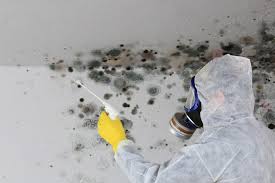MOLD
This is a huge topic to discuss. The best way to talk about this is to really bring it down to the most basic level of conversation. There are three major inhabitants of this earth. They are animals, plants and fungi. Within those three inhabitants there are hundreds of thousands of species fighting for equal existence. All this is deep but we need to talk about mold and where it fits in this conversation.

Mold like other fungi, has several different species within the family. Each of these species has a different role and job to do. Mold is also a hitchhiker and can attach to other species. These could even be us. We could walk across the grass and have mold attach to our shoes and walking into our homes brings in the molds.
One of the challenges with mold is there are not governmental standards producing a “pass or fail” level of mold. This is mainly because there are so many different molds there would have to be a standard created for each of the various species of them. The other is each person has a different tolerance or personal action level for each mold. A great example is cat or dog dander. One person might be very content to have a pet rub up against them while another will have an allergic reaction to that same animal. Mold is similar. One person might have a reaction to one species while another has no reaction.

The easiest way to look at mold is to lump all of various molds and species into three very basic categories; Allergenic, Toxigenic, and Pathogenic. Allergenic molds are those that might make a person sneeze and wheeze. There might be some form of allergic reaction. A toxigenic mold is one that might make someone have a more adverse reaction and more significant reactions. A pathogenic mold could be a mold that is more extreme with the potential of a fatal reaction.

By looking at the mold this way one might consider the action levels to produce a varied cleaning or action plan. Allergenic molds are very topical and could be thoroughly cleaned. This cleaning should eliminate the molds and leave the surfaces or areas safe. Toxigenic molds might require a more invasive cleaning which includes removal of the affected areas and thoroughly cleaning to leave the areas free of the molds. When pathogenic molds are present advanced and professional remediation is always recommended. These cleanup measures will be very invasive and potentially costly.
A home inspector might test for mold with the goal as to produce a list of the various species present and levels of mold of those species quantified. By identifying these species and noted what, of the three types are present, an educated action plan can be created.
A The BrickKicker inspector has the ability to provide mold sampling. These samples are sent to a lab and your mold report will be created. The BrickKicker is not a remediation specialist and so we can help you with any of your next steps.